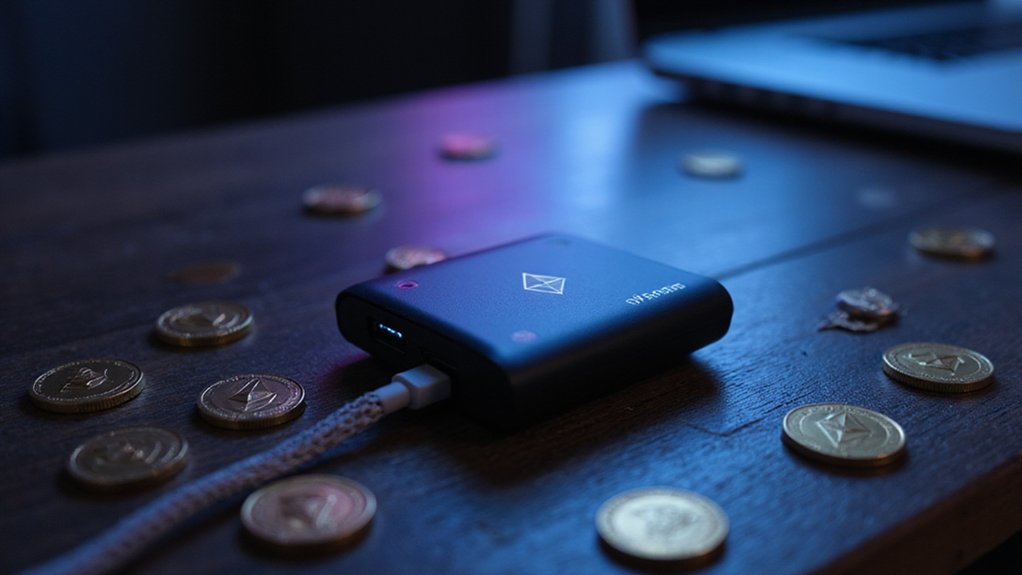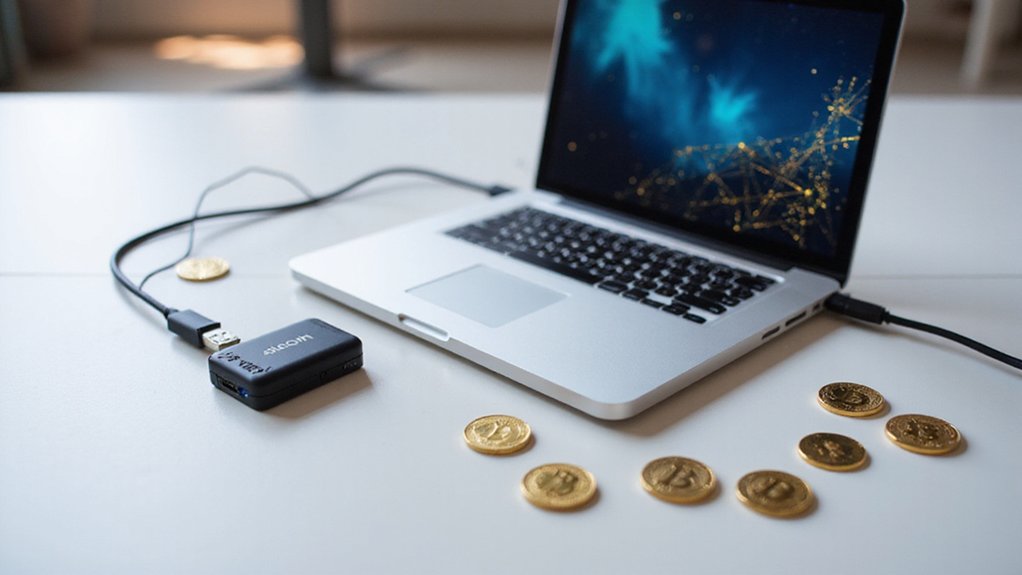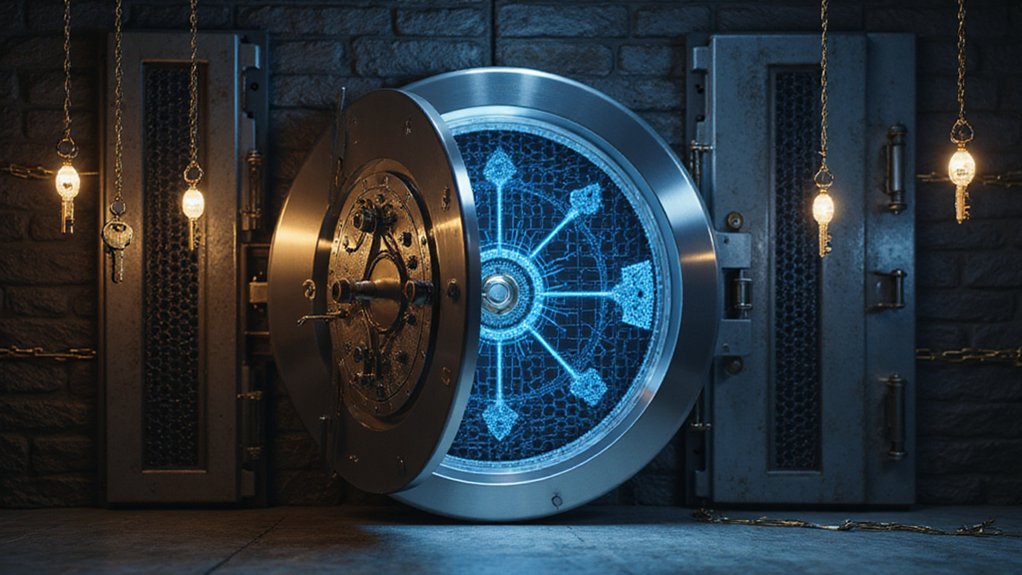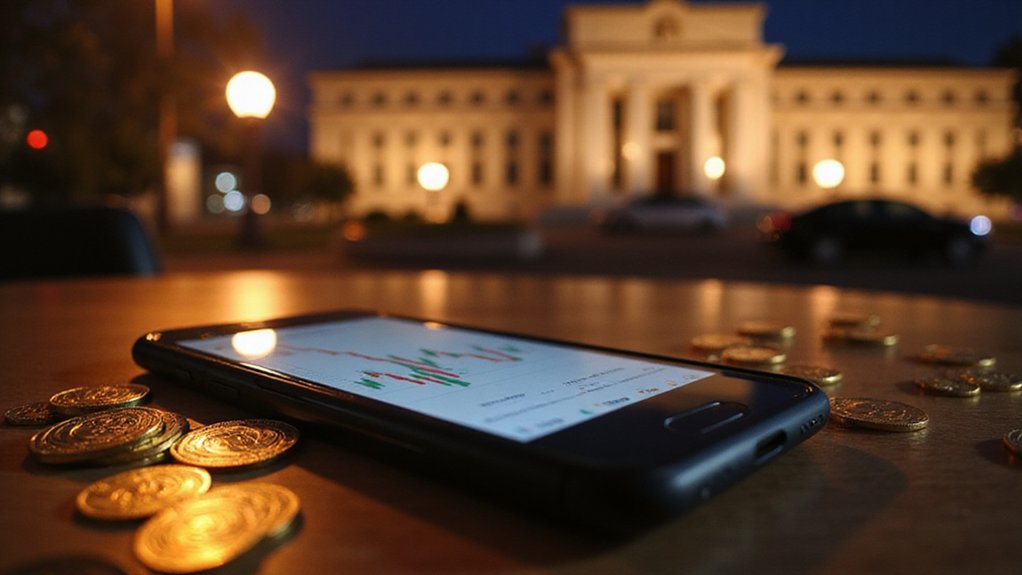ERC-20 serves as Ethereum’s standardized protocol for fungible tokens, functioning like a universal banking interface that governs digital assets worth hundreds of billions. This framework mandates core functions—totalSupply(), balanceOf(), transfer(), approve(), and transferFrom()—enabling seamless integration across wallets, exchanges, and DeFi applications. While the standard transforms chaotic token diversity into predictable uniformity, its limitations with edge cases and non-fungible assets sparked evolution toward more sophisticated token frameworks that address these constraints.
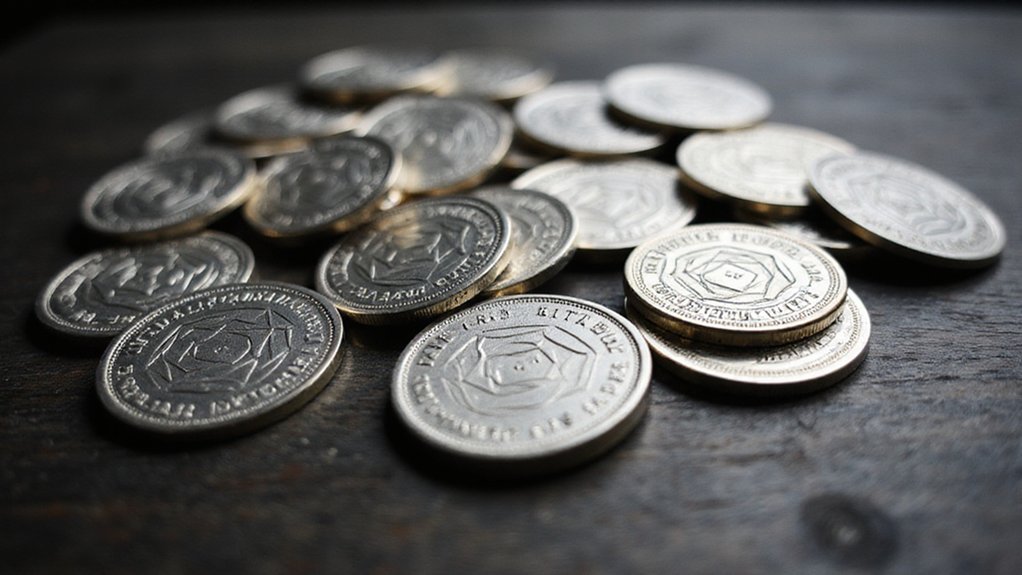
While blockchain enthusiasts debate the merits of various cryptocurrency innovations, the ERC-20 token standard quietly emerged as the backbone of Ethereum‘s fungible token ecosystem—a technical specification so fundamental that it now governs thousands of digital assets worth hundreds of billions of dollars.
ERC-20, standing for “Ethereum Request for Comment 20,” functions as the digital equivalent of standardized banking protocols, establishing uniform rules that all fungible tokens on Ethereum must follow. This standardization guarantees that each token operates identically to another of the same type, creating the predictable behavior that financial markets desperately require (though one could contend predictability remains a relative concept in cryptocurrency).
ERC-20 transforms chaotic token diversity into standardized uniformity—the closest thing cryptocurrency markets have to actual predictability.
The standard mandates six core functions that read like a minimalist’s approach to financial infrastructure: totalSupply() reveals how many tokens exist, balanceOf() checks account holdings, and transfer) moves tokens between addresses. More sophisticated operations include approve), which grants spending permissions to third parties, and transferFrom(), enabling authorized token movements—functionality that transforms simple digital assets into the building blocks of complex financial instruments. These functions work together to regulate token issuance, track balances, and ensure proper authorization for all transactions, creating a secure framework for digital asset management.
Beyond these mandatory functions, ERC-20 tokens can implement optional metadata including name(), symbol(), and decimals()—details that help wallets and exchanges display information properly. Most tokens adopt 18 decimal places, a curious homage to Ethereum’s own divisibility structure that demonstrates how arbitrary technical decisions become entrenched standards.
The true genius of ERC-20 lies in its interoperability. Tokens adhering to this standard seamlessly integrate with decentralized exchanges, lending protocols, and countless decentralized applications without requiring custom integration for each new asset. This compatibility created the foundation for decentralized finance, where stablecoins, governance tokens, and yield-bearing assets interact with mechanical precision. The standard’s implementation reduces the need for trust between parties by automating asset transfers through smart contracts.
However, ERC-20’s simplicity reveals certain limitations. The standard struggles with edge cases like failed transactions and cannot accommodate non-fungible assets or tokens requiring complex behaviors beyond basic transferability. Originally proposed by Fabian Vogelsteller in November 2015, this specification laid the groundwork for what would become the dominant token framework on Ethereum.
These constraints sparked development of newer standards like ERC-721 and ERC-1155, though ERC-20 remains the dominant framework for fungible tokens—a reflection of the enduring power of well-designed simplicity in an ecosystem notorious for unnecessary complexity.
Frequently Asked Questions
Can ERC-20 Tokens Be Converted Back to Ethereum?
ERC-20 tokens cannot technically “revert” to Ethereum since they’re separate assets—though both inhabit the same blockchain ecosystem.
Users must actively swap these tokens for ETH through decentralized exchanges like Uniswap or centralized platforms offering trading pairs.
The process involves selecting the token, choosing ETH as output, approving the transaction (incurring gas fees), and executing the swap—assuming sufficient liquidity exists.
What Happens to ERC-20 Tokens if Ethereum Upgrades Its Blockchain?
ERC-20 tokens typically survive Ethereum upgrades unscathed, thanks to the network’s backward compatibility obsession.
Token contracts remain frozen in their original state unless developers implement upgradeable proxy patterns—a prudent architectural choice that allows logic updates while preserving balances.
Hard forks present the delightful complexity of duplicated tokens across parallel chains, though most protocol changes abstract away from token-level operations, maintaining ecosystem stability.
Are There Transaction Fees for Transferring ERC-20 Tokens Between Wallets?
Yes, ERC-20 token transfers incur transaction fees paid in ETH, not the tokens themselves—a delightful irony requiring users to maintain ETH balances even when transferring other assets.
Fees typically range from $1.15 to $30 during network congestion, as smart contract execution demands more computational resources than simple ETH transfers.
Gas prices fluctuate with network demand, making timing essential for cost-conscious users seeking ideal transfer windows.
Can I Create My Own ERC-20 Token Without Coding Experience?
Creating ERC-20 tokens without coding has become surprisingly accessible through no-code generators like Token Tool and Vittominacori.
These platforms require only wallet connection, basic parameter input (name, symbol, supply), and gas fee payment—transforming what once demanded programming expertise into a minutes-long process.
While deployment remains subject to Ethereum’s network fees and platform limitations preclude complex custom logic, virtually anyone can now mint their own cryptocurrency with minimal technical knowledge.
Do All Cryptocurrency Exchanges Support ERC-20 Tokens Automatically?
Cryptocurrency exchanges decidedly do not support ERC-20 tokens automatically—a reality that surprises newcomers expecting universal compatibility.
Major platforms like Bitfinex and Huobi Global selectively integrate tokens based on trading volume, market demand, and technical feasibility. Each token requires custom implementation of Ethereum’s six mandatory functions, smart contract integration, and operational considerations around gas fees.
Exchanges prioritize established tokens over the countless newcomers flooding the market daily.

